A Turmeric Tincture Recipe to make your own convenient immune boosting and anti-inflammatory supplement with fresh turmeric. Easy and budget-friendly.
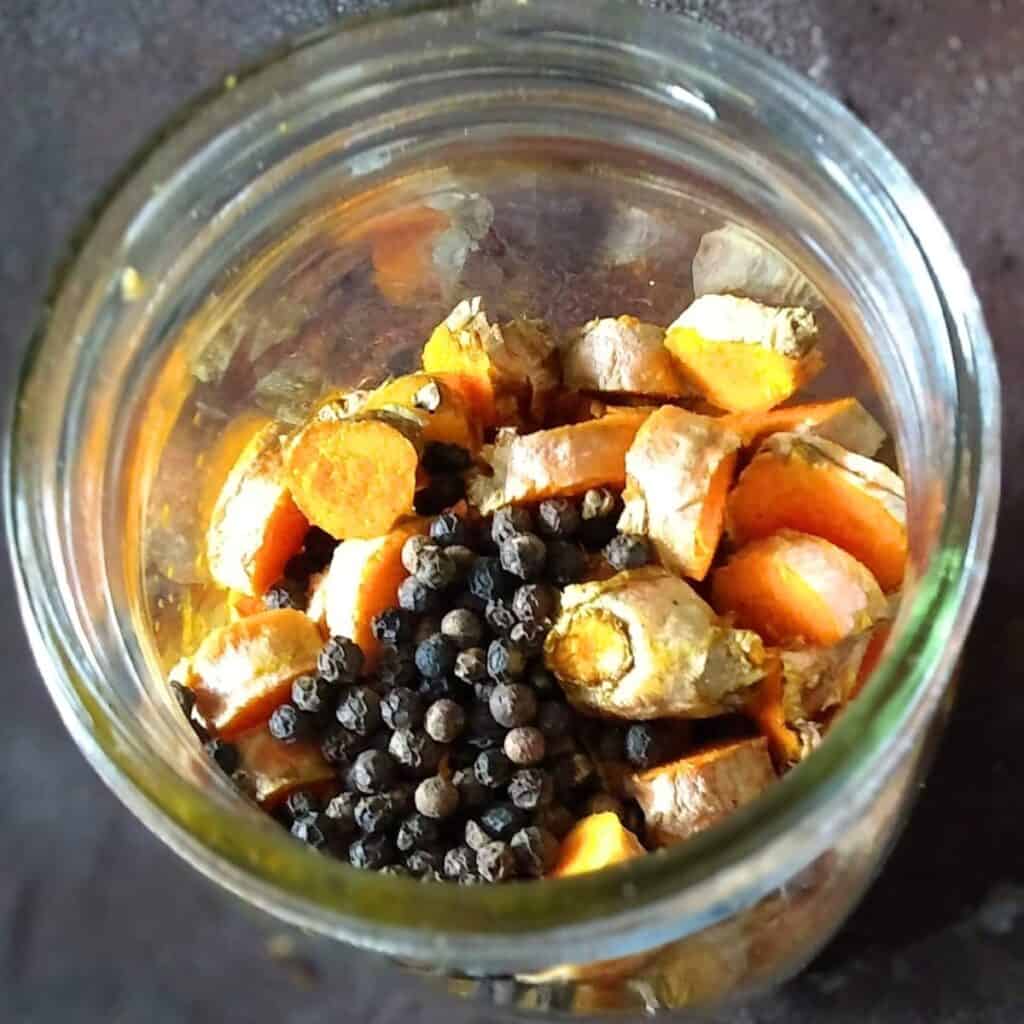
This post contains affiliate links and as an Amazon affiliate I earn from qualifying purchases. This means I make a small commission at no extra cost to you if you make a purchase.See my full disclosure here.
Are you taking turmeric or curcumin for immune support, joint pain, or as an anti-inflammatory aid? Turmeric has such powerful healing properties. Many supplements offer just the isolated curcumin compound, but we’ll be using the whole rhizome in this recipe and discuss the benefits. And we’ll discover how to make a turmeric liquid extract.
There are many ways we can incorporate whole turmeric in our meals and we can make tea, golden milk, or fermented turmeric paste. But none of these lend themselves well to take as a supplement throughout the day wherever you are. This is where Turmeric extract (tincture) comes in handy. And it is so easy to make. Learn how turmeric tincture made from fresh turmeric can help you and how to make your own.
Other tincture recipes and benefit guides you might like are Purple Dead Nettle Tincture, Lemon Balm Tincture, or Black Walnut Tincture.
How Turmeric Tincture Can Benefit You And How To Make It Yourself
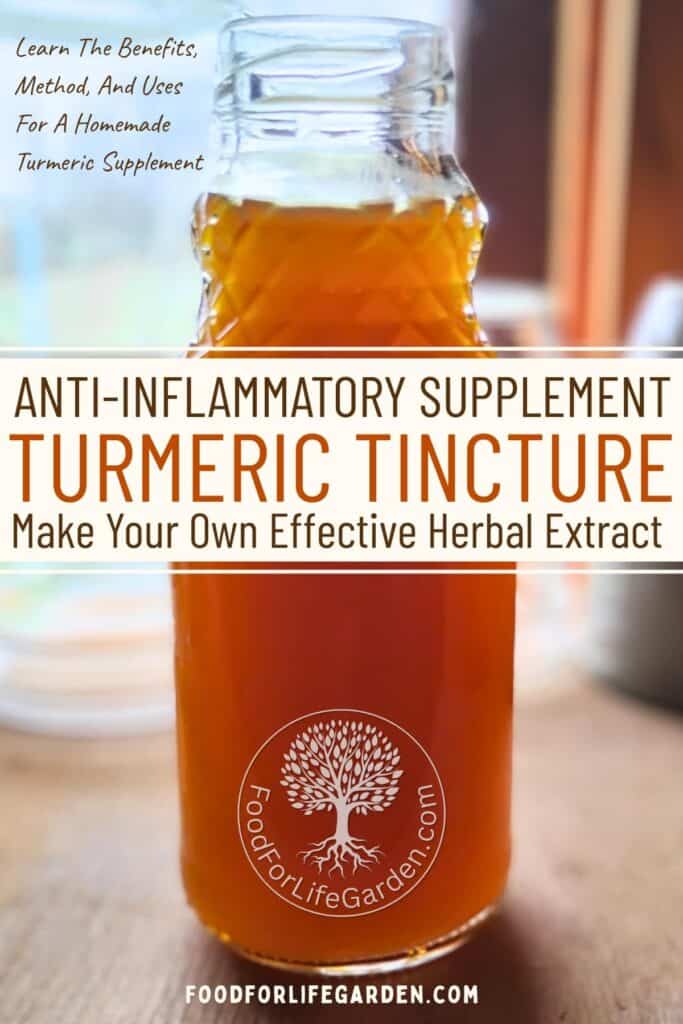
Turmeric (curcuma longa) is a member of the Zingiberaceae family, just like ginger. Turmeric is a rhizome that grows shoots above ground and feeder roots below. The rhizome that we usually buy in the store is actually the stem of the plant that grows horizontally just below the soil surface.
The shoots and leaves of the turmeric plant are also edible, but are not usually found in stores. However, if you grow your own turmeric, you might want to try them in soups, stir fries, or to make tea. They also make great wrappers for fish and steamed, wrapped fillings like you would with cabbage, grape, or banana leaves. And they can be dried and ground into a powder for use in soups and smoothies.
Mostly we use the rhizome to lend color and flavor to dishes such as curries and rice pilafs, healing drinks such as fire cider, turmeric shots and golden milk, and condiments such as pickles and mustard.
However, the rhizome itself is loaded with powerful compounds, which have amazing health benefits, the most famous being curcumin. You can find more details about turmeric benefits in my post on making fermented turmeric paste.
And the best turmeric is grown at home in good organic compost and used when freshly harvested. So if you’re inclined, give growing turmeric a try!
For instructions on growing turmeric, whether you’re in a warmer zone, or way up North, head on over to my guide how to grow ginger. The instructions there will apply to turmeric just the same.
The Health Benefits Of Turmeric
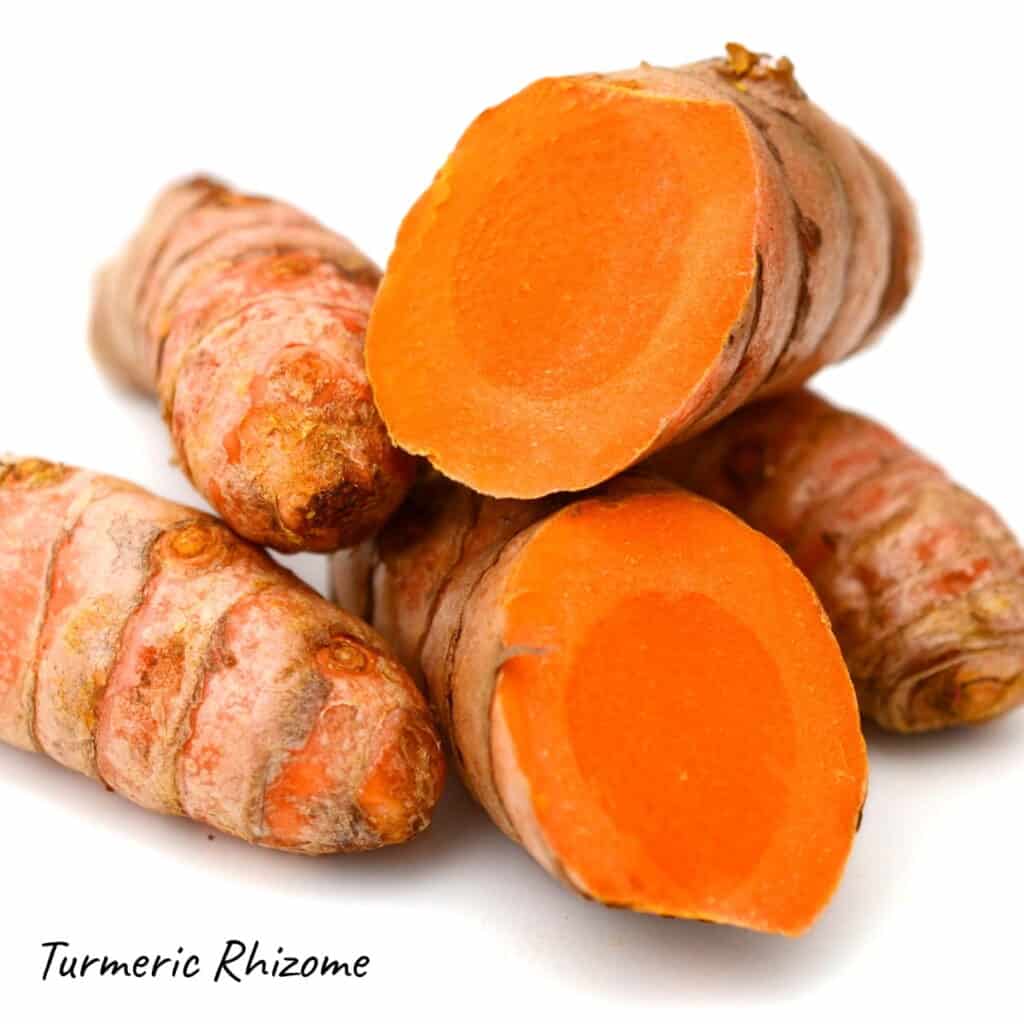
I’ve gathered a list of health benefits that are associated with taking turmeric. Some of these are more or less confirmed by modern science, and many studies are done with the isolated curcumin compound.
However, use of turmeric dates way back in time and it has been used traditionally as a whole herb throughout the ages in India. It is an important healing herb in Ayurvedic medicine.
Turmeric has become very popular recently in scientific circles. Science is taking a hard look at turmeric and numerous recent studies show much promise for turmeric in preventing and healing even chronic diseases.
The list of benefits of turmeric is impressive! I found a detailed study about using the curcumin compound in turmeric to combat a broad range of cancers. Here is their conclusion (emphasis mine):
“Overall, our review shows that curcumin can kill a wide variety of tumor cell types through diverse mechanisms. Because of numerous mechanisms of cell death employed by curcumin, it is possible that cells may not develop resistance to curcumin-induced cell death. Furthermore, its ability to kill tumor cells and not normal cells makes curcumin an attractive candidate for drug development.” How cool is that!
While science is studying how to use isolated compounds in turmeric, holistic medicine acknowleges the benefits of the whole rhizome. I adhere to the holistic point of view and will explain why in a bit.
Here is a list of some of the possible benefits, and modern and traditional uses of turmeric:
- Anti-inflammatory
- Anti-tumor
- Anti-cancer
- Antibacterial
- Antioxidants
- Strengthens the immune system. Turmeric is an immune modulator and can regulate the immune system’s activity. It is great for both, supressing pro-inflammatory responses and, at low doses, enhancing immune funtions. It can help with antibody production.
- Fights free radicals
- Anti-depressive
- Reduces arthritis inflammation and pain, and improves joint health
- Boosts memory, improves brain function and overall brain health, and might help with Alzheimers
- Might lower risk of heart disease and might help with high cholesterol and metabolic health
- Can help manage diabetes
- Beneficial for skin and bruising
- Digestive aid
- Enhances liver function, anti-hepatic, stimulates bile production
- Can help with seasonal allergies and may help with better sleep
Get more details on the benefits of turmeric in my recipe post for fermented turmeric paste!
Sources: NCCIH, Mayo Clinic, PubMed Central, The Herbal Academy, Research Gate, PubMed
Let’s Explore How Turmeric Tincture From The Fresh, Whole Root Is Preferable To Other Options.
Why Make Turmeric Tincture From Fresh, Whole Turmeric
Whole Turmeric Vs. Isolated Curcumin
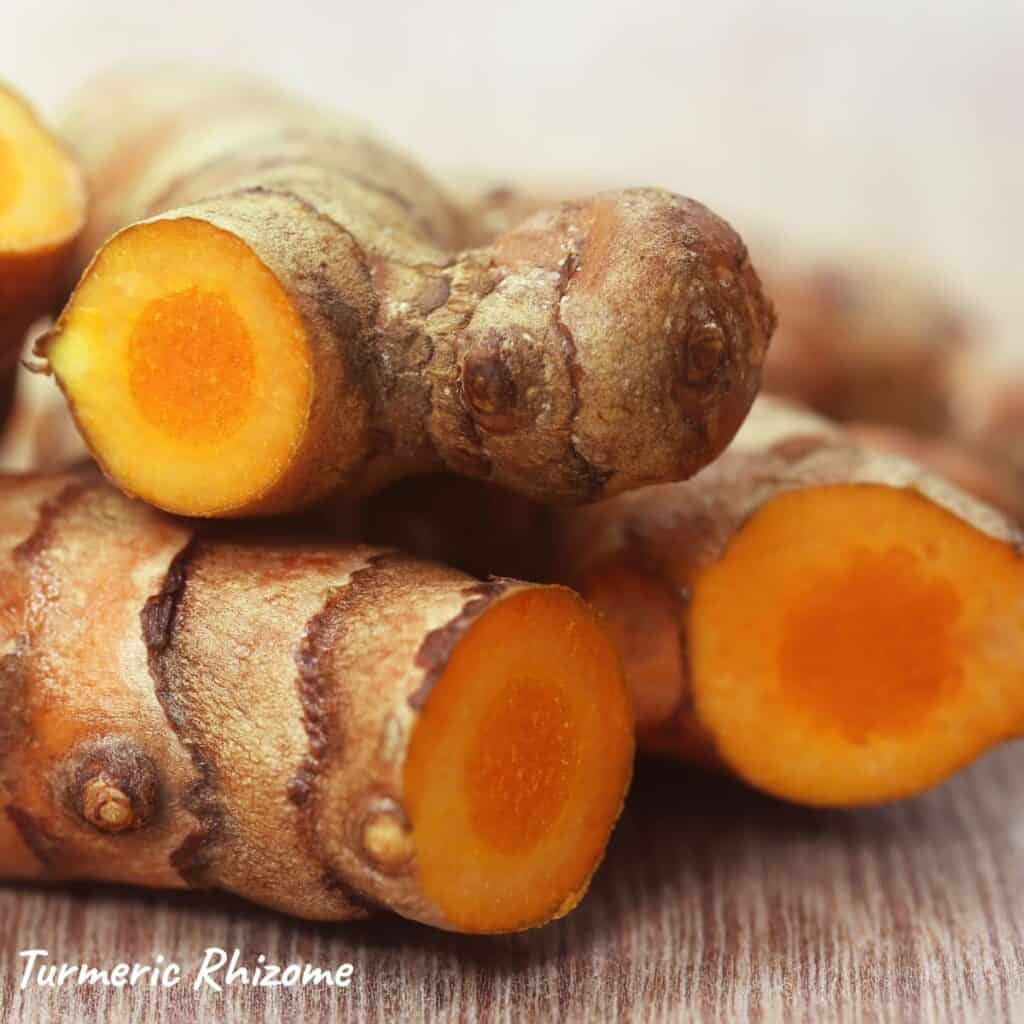
When we take isolated compounds of any plant, we get a high concentration of that chosen “active ingredient” that is known to affect and help improve certain ailments.
However, this does not take into consideration that all the compounds within a plant work in synergy and are needed in combination to have a greater impact. But holistic herbalists recognize the power of the whole herb.
An isolated compound is harder to for our body to work with, since it doesn’t have supporting partners. Adding black pepper helps, but there are still many links missing that are available in the whole turmeric rhizome.
There have been studies that show that turmeric is more effective and better absorbed as a whole herb than curcumin alone. Whole Turmeric has many healing compounds and by isolating curcumin we miss out on the benefits of all the other compounds.
While curcumin might be the strongest of turmerics polyphenols, some of the benefits of turmeric are more pronounced in several of its other compounds. And it has been shown that all of them together increase the benefits of each. As in TEAM: Together Each Achieves More!
So while isolating curcumin might seem a good thing, and it can help with certain health problems, it is much better to keep use the whole turmeric rhizome for more and stronger benefits. (source)
The compounds in whole herbs act synergistically and our bodies know how to process them. When we take all of it, the fibers, nutrients and all those natural components in a plant together as a whole, they each help with absorption, and they can support one another and interact to make each more effective.
That’s how plants were designed by our creator. We don’t find curcumin growing on its own anywhere in nature for a reason. And side effects are much less likely when we use the whole plant.
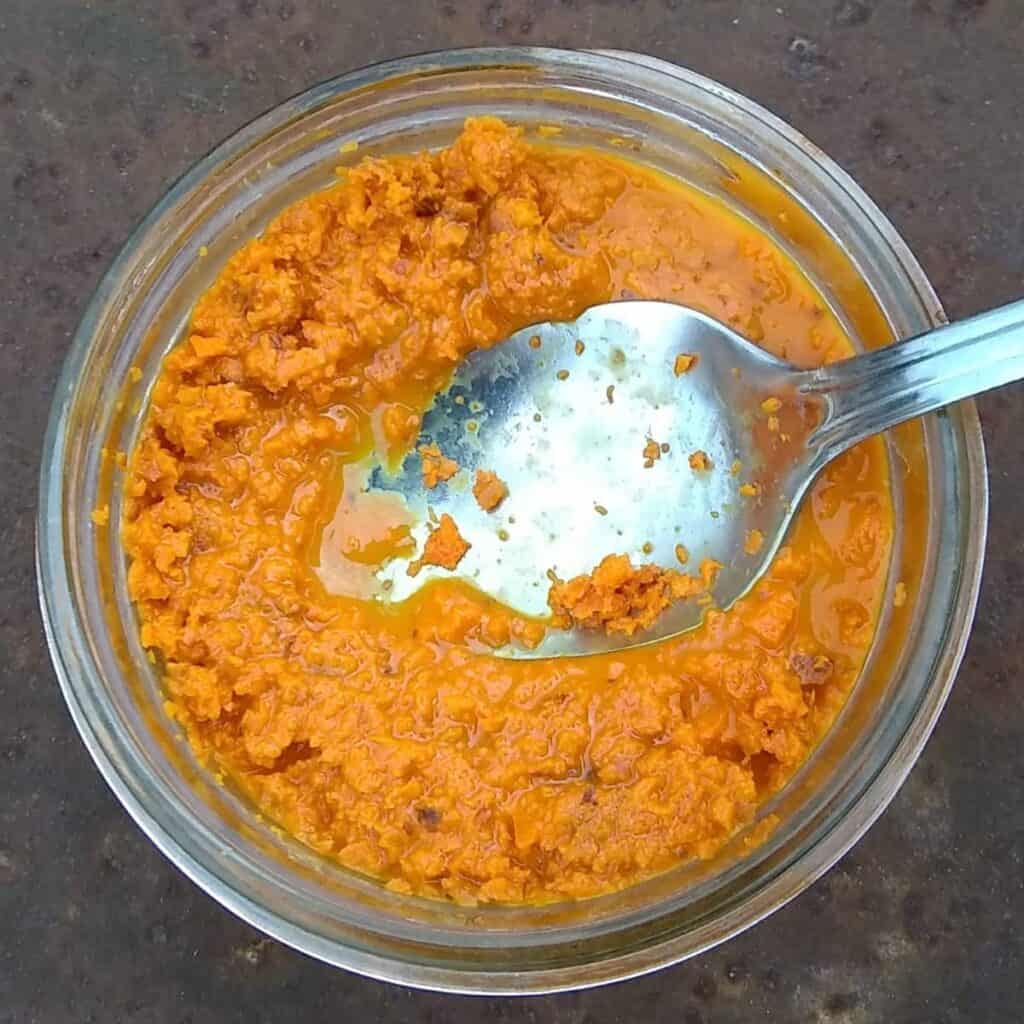
Taking black or white pepper with turmeric can help with absorption and taking some fats with turmeric will allow access to the benefits of its fat solulable compounds (source). This is true for the isolated curcumin as well as whole turmeric. Fermenting turmeric is another great way to make fresh turmeric root more bioavailable and absorbable.
Fresh Turmeric Root Vs. Powdered
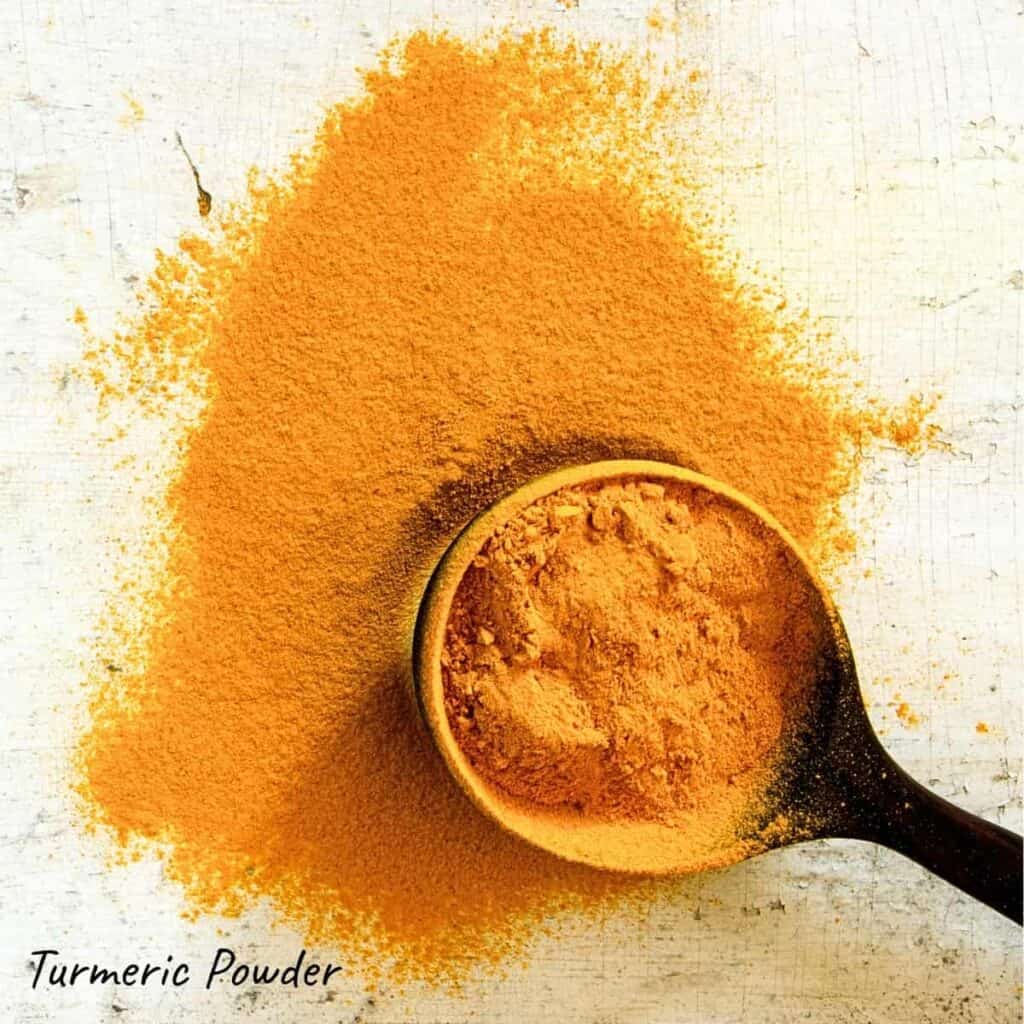
Turmeric is offered as fresh rhizomes, dried granules or powder, and you can get the isolated curcumin compound in capsule or liquid form.
Dried and powdered turmeric is less potent than the fresh rhizome, but you can use the powdered product for health purposes if you can’t find it fresh. Use a high quality organically grown powder for best results and you can tincture it, capsule it, mix it into golden milk or use it in cooking.
The fresh rhizome is more potent than the dried, and the fresher it is, the more potent it is. That’s why growing your own is a great idea if you want to get the most from your turmeric supplement. When we take dried, powdered turmeric, we get only a fraction of the benefits vs taking the fresh herb.
With a little over half a pound of fresh organic turmeric roots and some cheap vodka, we can make about 3 cups of extract. That’s over 6 month’s supply of of turmeric tincture when taken daily. And you get the benefit of the whole herb with all its fringe benefits too.
Ways to increase Absorbency And Effectiveness Of Turmeric
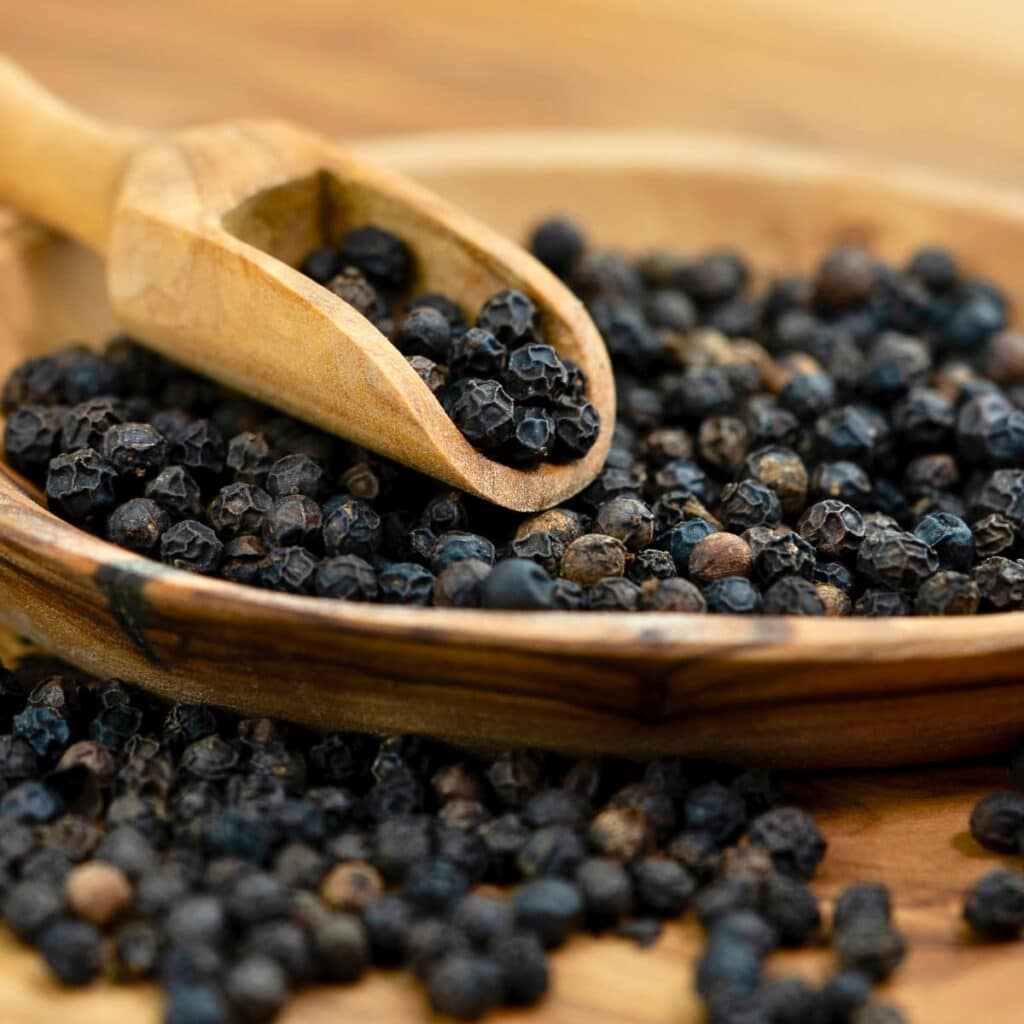
Whole herbs are easier for the body to break down and use. They come with their own set of synergistic compounds and nutrients to be useful for those who eat them.
In the case of fresh turmeric root, you can increase absorbency by fermenting as in fermented turmeric paste. And in all cases, as well as when making tincture, adding black or white pepper will greatly help increase absorbance.
And, to access all the fat soluble nutrients, it’s best to take it with meals that include fats, or to take fat with your supplement. This can be healthy oils such as coconut, avocado or olive oil, or butter and other animal fats. This is why golden milk is made with whole milk traditionally and most often coconut oil is added too.
What Is A Turmeric Tincture
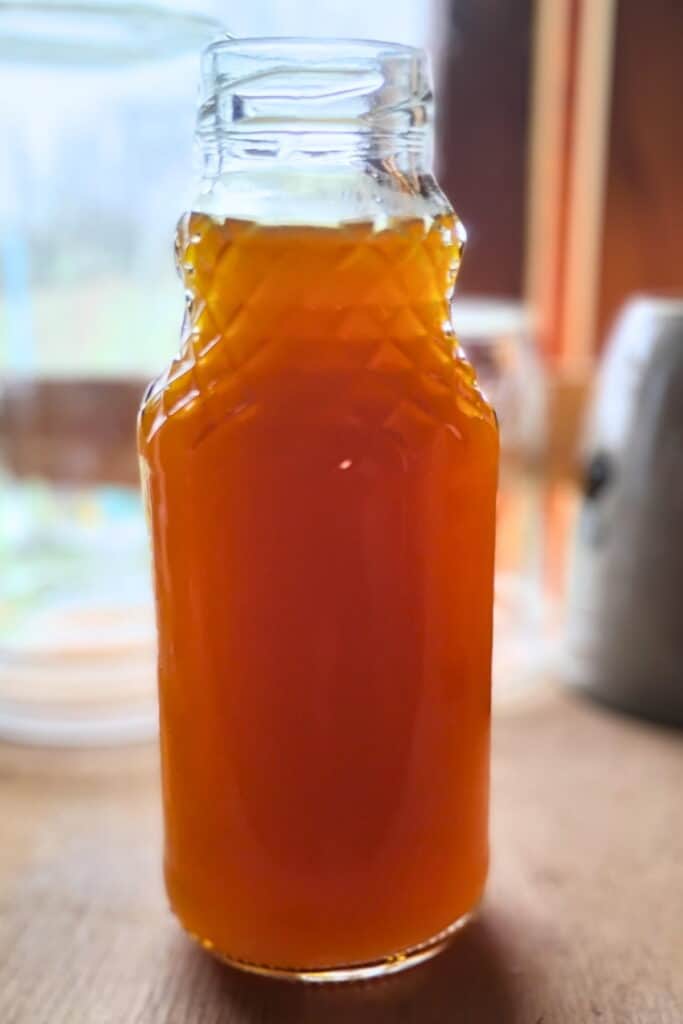
Turmeric tincture is an extract of the beneficial compounds that live in the turmeric rhizome. While there are other solvents that can be used to extract turmeric, the most efficient one is alcohol solvent.
If you can’t have any alcohol, you could also use vinegar or glycerin. But both of those are not as shelf stable for long term and they don’t tend to be as strong.
However, you can reduce the alcohol by adding your dose of finished tincture to some hot water, and letting it evaporate for a few minutes before drinking it. This will reduce the alcohol content of herbal tinctures.
And just for your information, you’re taking no more than a teaspoon full of alcohol with a daily dose of 3 droppers.
How To Make Your Own Turmeric Tincture Supplement
The best, most potent medicine is made from fresh, organically grown turmeric. And to increase the absorbance, we’ll add some black or white pepper to make turmeric with black pepper tincture, which acts as a synergistic herb. Pepper can do that for many other herbs as well.
Equipment
2 quart jars with a tight fitting lids – I use a regular canning jar that I cover with the flat part of the 2-piece lid and then I use a plastic lid over that to seal it up. The plastic won’t corrode and, in my experience, it does better at pressing the flat metal disk down for a good seal than the regular metal band. You’ll need one for tincturing and one for storing the tincture.
Nut milk bag, paint strainer bag, flour sack towel or butter muslin – for straining your tincture later.
Dropper bottle for dispensing – You can use a measuring spoon to dose your tincture, but its so much easier to use a dropper bottle. You can reuse an old one you might have at home, or purchase them. I’ve had good luck with these dropper bottles from Amazon.
But do not store the tincture in dropper bottles for long term. The alcohol will evaporate out of the rubber lids over time. A few months is fine though.
Pair of nitrile or rubber gloves – If you don’t want stained fingers, gloves can help. Turmeric can stain anything it touches, so keep that in mind when working with it. I like nitrile gloves for this job.
Ingredients
Organic turmeric rhizome – If you can’t find good fresh turmeric, you can use dried herbs. Try to get a good quality organic turmeric powder or dried, chopped organic turmeric root. You can also get fresh organic turmeric root for this tincture at Azure Standard if you can’t find it locally in your grocery store or health food store.
Black peppercorn – I used about a tablespoon. It doesn’t take much pepper to make turmeric absorbable. You can use white pepper as well, it should be whole or freshly crushed or ground, as the piperine in pepper will degrade after grinding.
100 proof Vodka – 80 proof will do if necessary, but 100 proof is preferred. Get the cheapest you can find. I’d love to use organic, but they are rare and super expensive. This will be your alcohol solvent to extract the most compounds from the turmeric.
I advice against using a higher percentage alcohol. It is not neccessary, and then you have to figure out dilution rates with distilled water just to arrive at the same 50 percent alcohol that you get from the 100 proof vodka. The ideal alcohol percentage is 50 percent.
Turmeric Tincture Recipe Steps
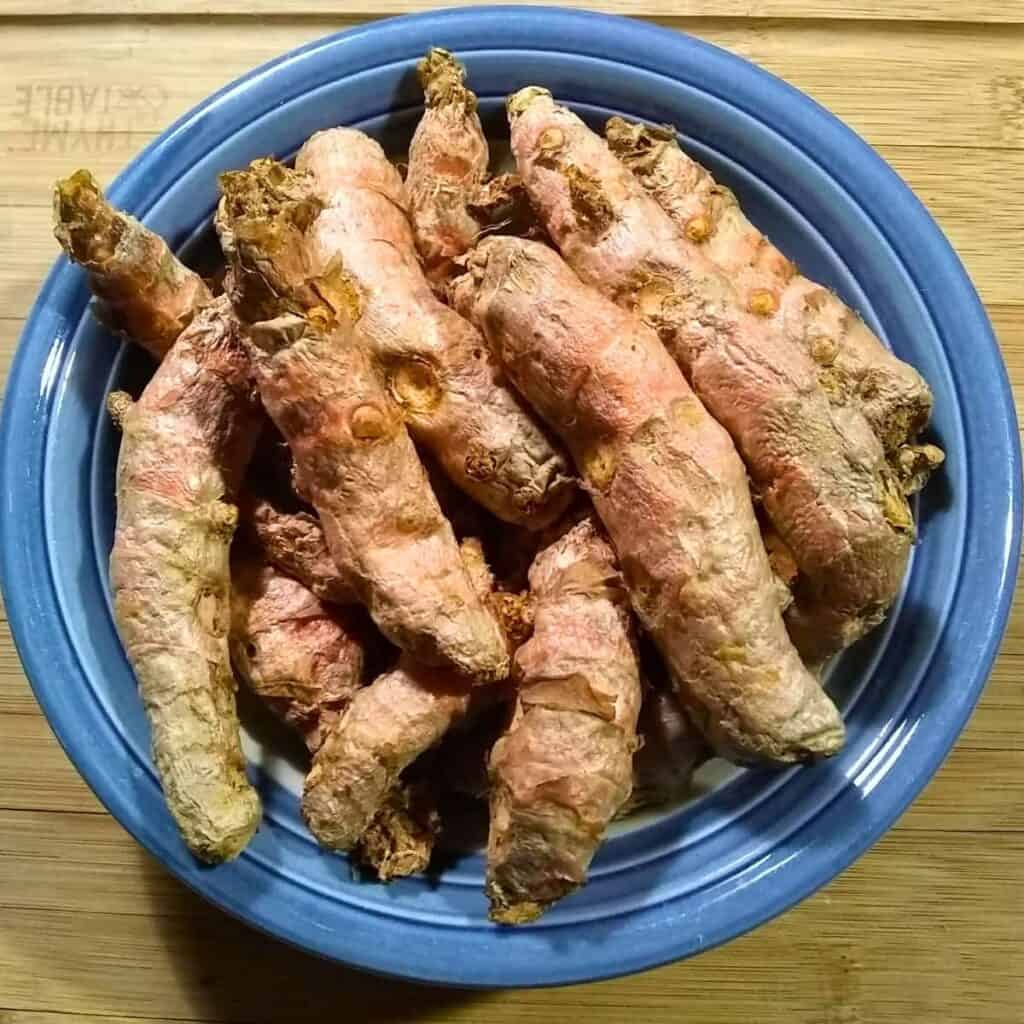
No need to peel the turmeric, just give it a good rinse and cut out any blemishes.
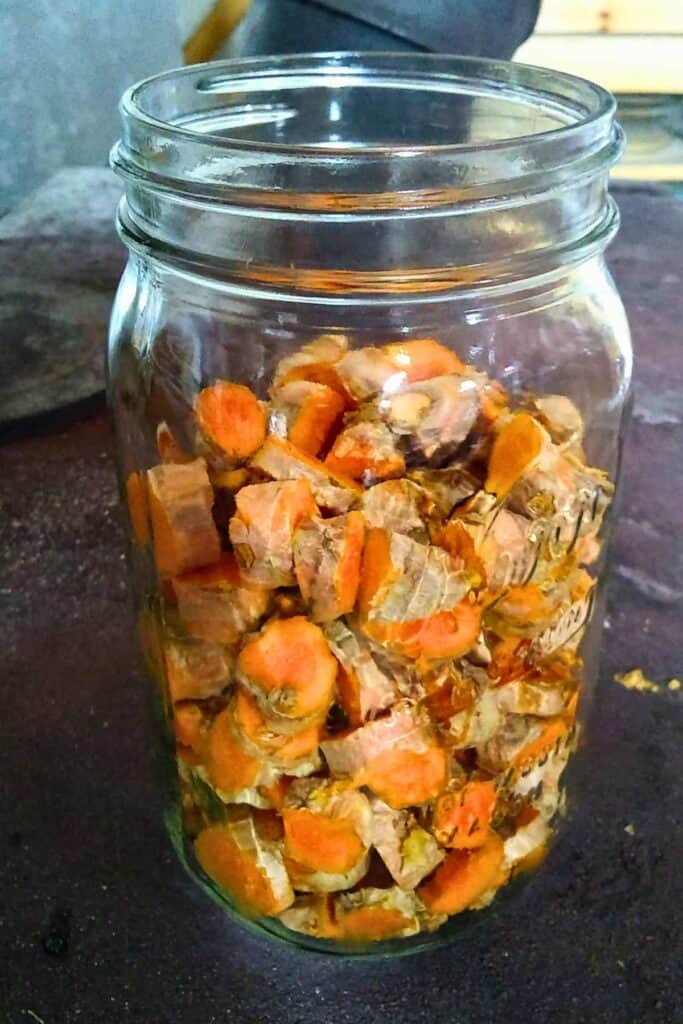
Grate, finely slice, or chop your turmeric root and fill your quart jar loosely to about 3/4 full. Use gloves if you have some, or your hands will stain (and everything else too).
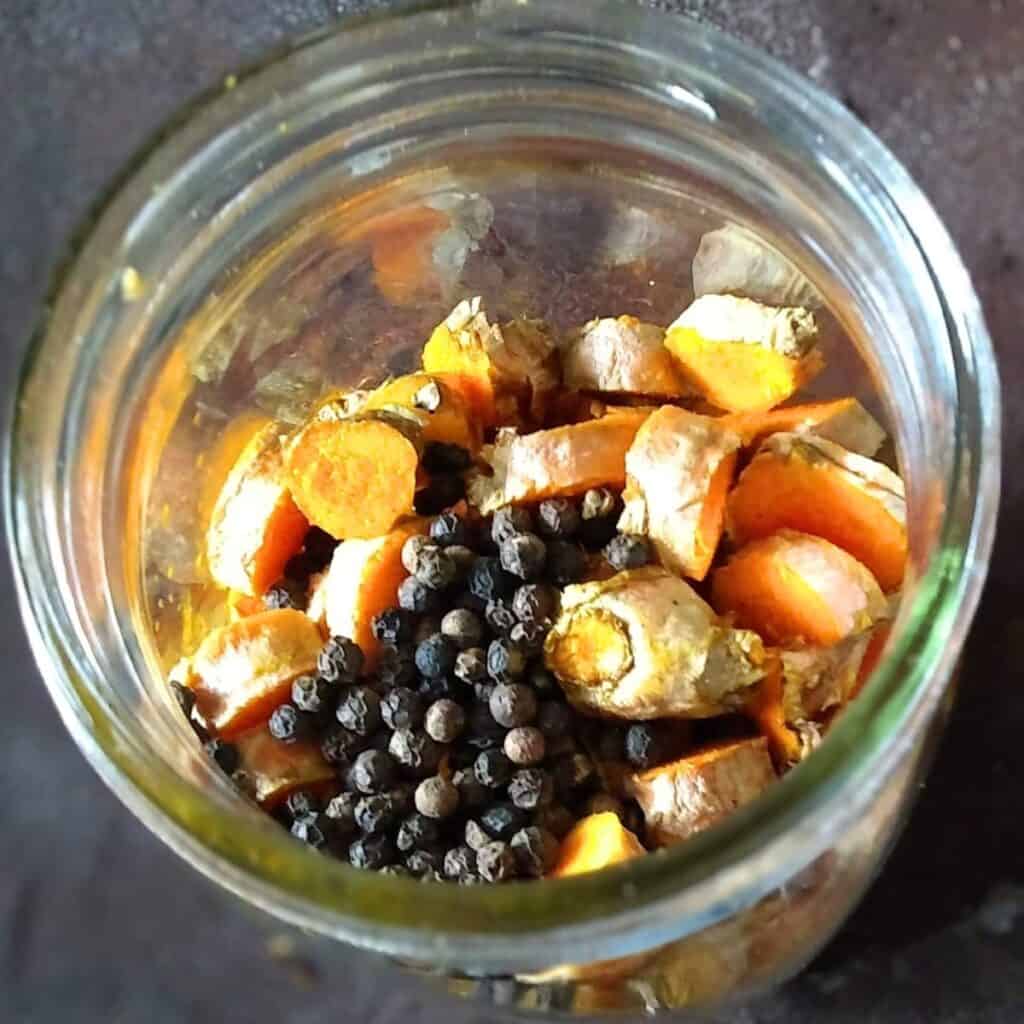
Add the peppercorn.
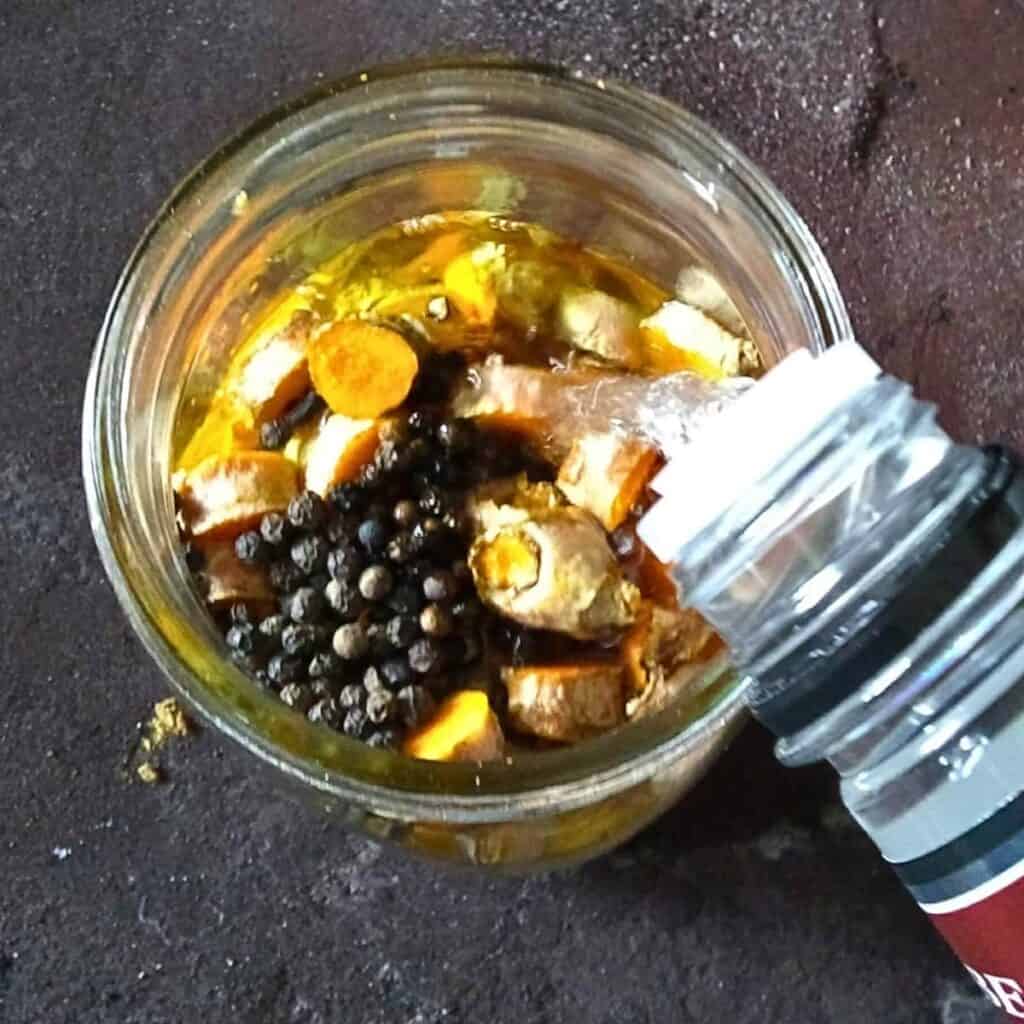
Pour the vodka over the herbs and fill the jar to the top. It is important to cover all of the herbs and as they will expand a little once wet, we’ll want to be generous. I like to fill mine right up to the very top. Check back later to make sure you still have them covered.
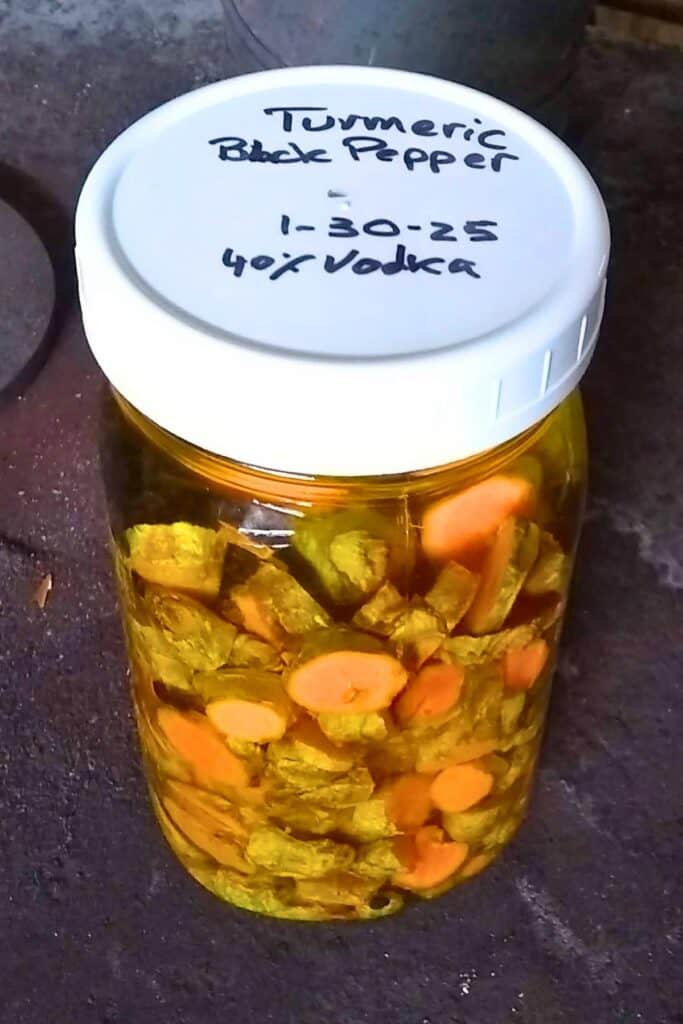
Close the lid tightly, label it, and shake it.
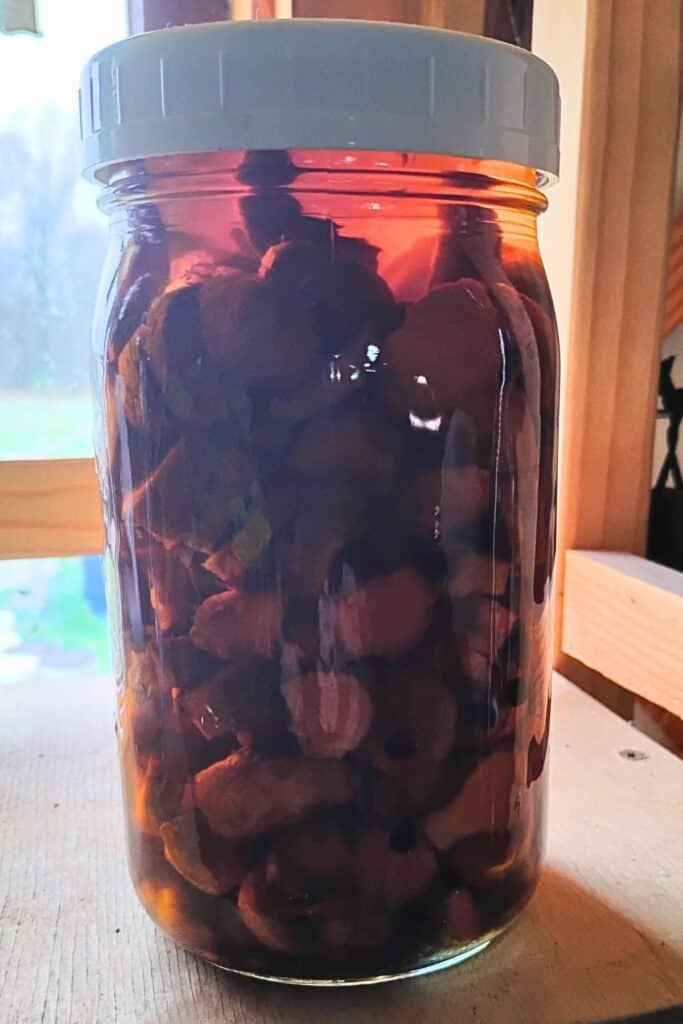
Set your tincture aside for 6-8 weeks to extract the benefits of the turmeric. Give it a shake every few days, or whenever you think about it.
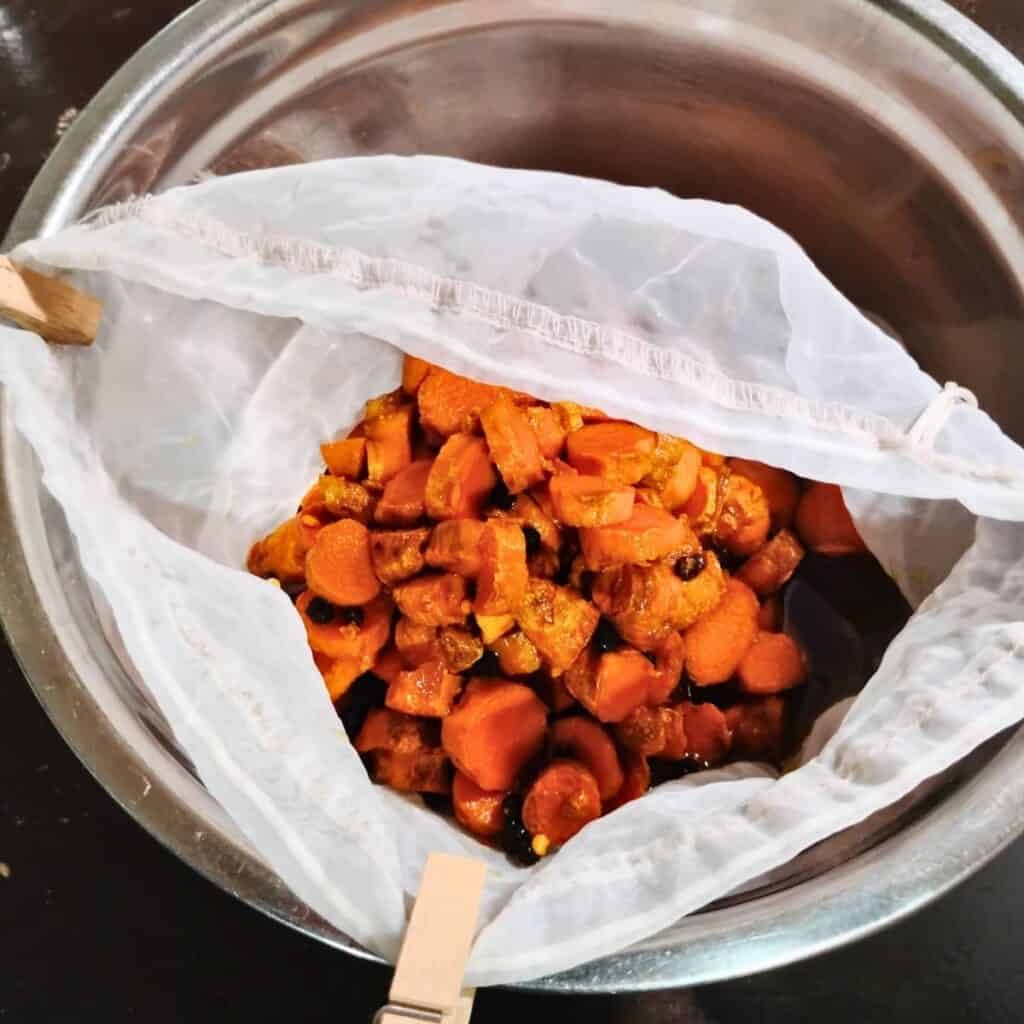
Strain out the herbs using a piece of cloth, or a nut milk bag.
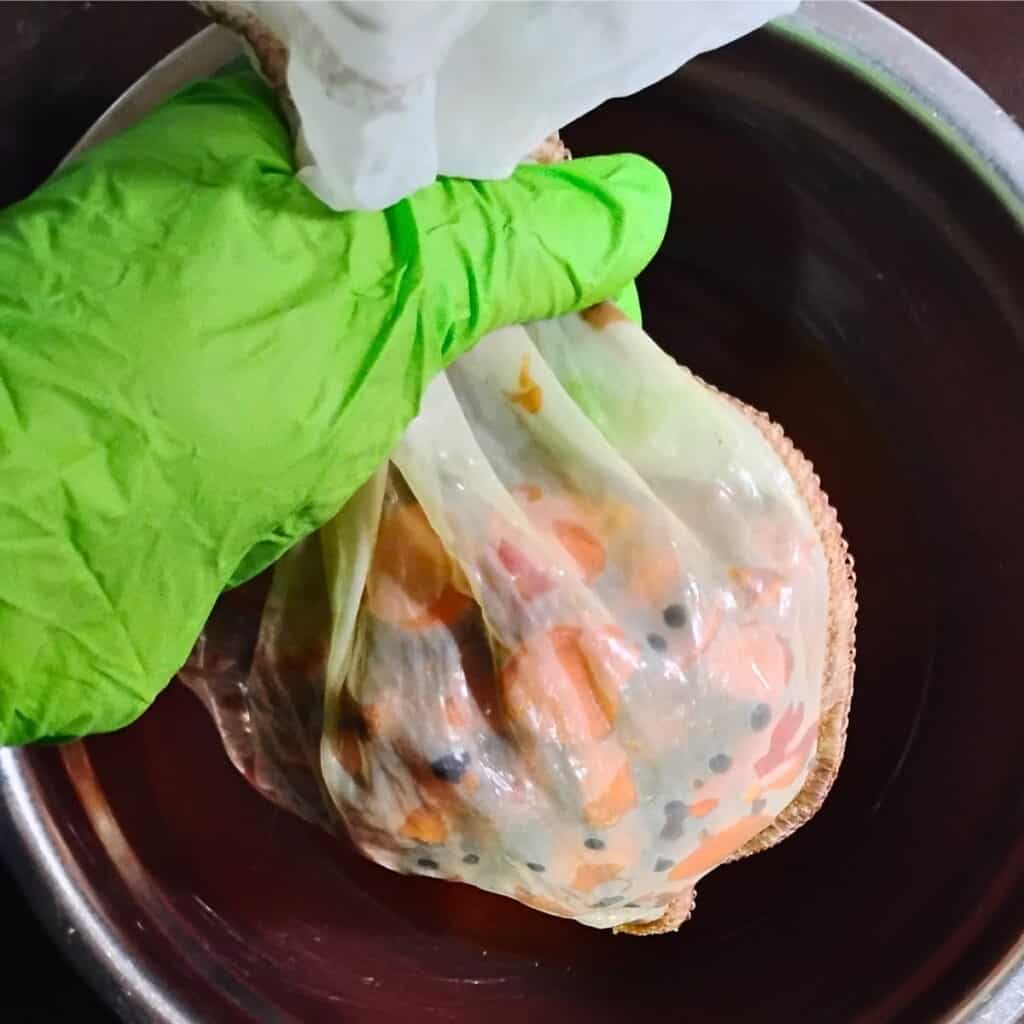
Squeeze out what you can and dispose of the solids in your compost. You can also add this to pig feed, but don’t add too much at a time (you don’t want to get them drunk). Turmeric is good for them too.
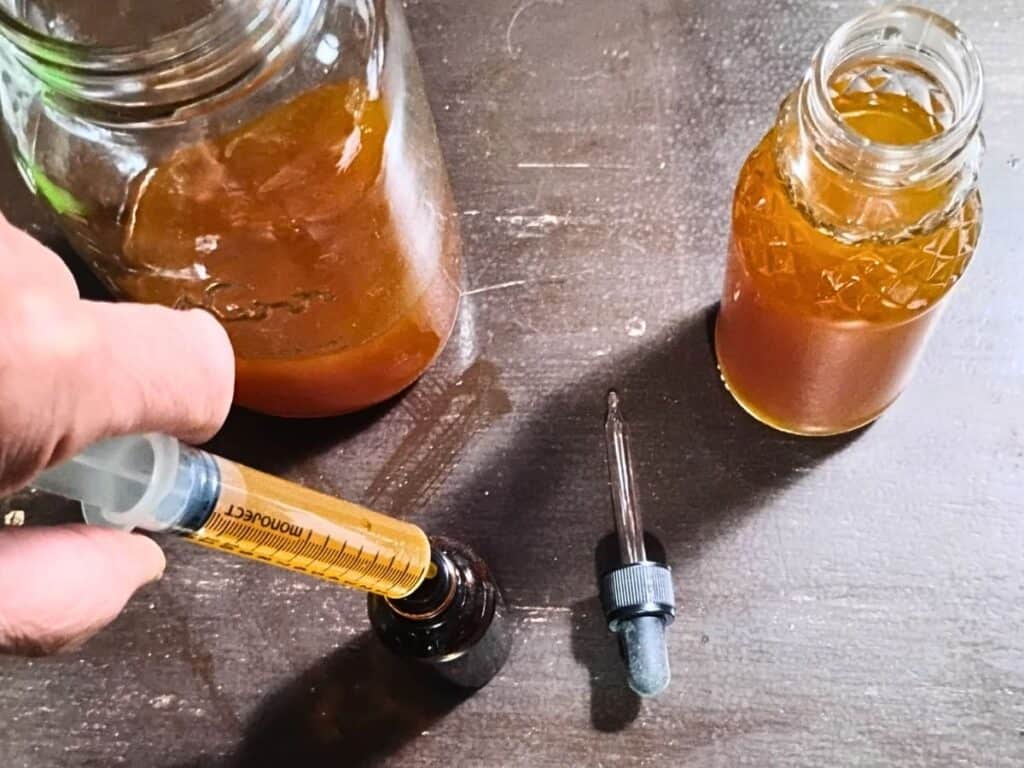
If you like, you can fill a dropper bottle with your tincture for immediate use. But store the rest in a well sealed jar, not in dropper bottles.
Now store it in a tightly sealed container in a dark cupboard.
How Long Will It Store?
It will keep for many years. I have tinctures that are 7 years old and are still great. One reason they can go bad is in case the alcohol evaporates and if you didn’t store it in a dark place. Make sure you keep it in a well sealed jar or bottle.
If you use it 10 years from now, give it a quick look, if it does’t look bad and smells good, make sure it still tastes of alcohol. Alcohol can evaporate even through seals. If it tastes off, it’s probably bad and you shouldn’t use it. But otherwise, it’s fine to use aged tincture.
Dosage For Turmeric Tincture

You can use a dropper bottle for easy dispensing. But don’t store tinctures in dropper bottles. In my experience, the alcohol evaporates over time through the rubber top, and that can ruin your tincture. Fill only what you’ll be using in the next month or so. Keep the rest in a tightly sealed jar until needed.
Herbalists recommend that you use 10-30 drops 3 times per day at equal intervals. One dropperful contains 20 drops. You’ll want to keep the curcumin circulating in your body throughout the day and that takes regular dosing to be effective. Start with a lower dose and use more if needed.
How To Take A Tincture
Tinctures work the quickest when taken under the tongue. Just squirt a few drops or a dropperful under your tongue and let it remain there for a moment. This is not a good thing to do over the long term, since you might damage the tissue in your mouth.
It is best to add tincture to a little liquid and drink it, such as with cold water, tea, or juice. And you can also add the tincture to hot water and let it sit for a few minutes to evaporate some of the alcohol.
What Are The Uses For Turmeric Tincture?
Use this tincture as you would any turmeric or curcumin supplement. Many people use turmeric supplements for joint pain and inflammation in the body. Due to its convenient form, you can take it in small doses throughout the day even when you’re away from home.
Turmeric is processed pretty quickly in your body and in order to assure that it will have a healing effect, you’ll want to keep it circulating in body throughout the day. Taking tincture every 6-8 hours will help keep turmeric present.
Uses are often for digestive issues, liver support, immune support, brain support, allergies, and more (see benefits section). If you are taking an OTC curcumin supplement now, you can try to replace it with this tincture.
Cautions
As with every food or herb, there are people who might react adversely to curcumin or turmeric. Because it has powerful medicinal compounds, it is advisable to consult with your physician, midwife, or naturopath if you are taking any medications, have health conditions, or are pregnant or nursing.
Be aware that anyone could potentially have an allergic reaction to a new food or herb, and so start using a new herb in small doses and watch for any signs of discomfort.
Here is an article on dosing and contra indications for turmeric. And find some research on medicinal uses of turmeric here.
Disclaimer: I am not a doctor or claim to be qualified in any way to give medical advice. I am self-taught and this article reflects just my opinions, experiences with herbs, and what I’ve learned from years of studying herbalism, herbs, and their uses. This article is meant for entertainment, reference, and to encourage interest in herbalism. It is my hope to help you get to know and appreciate herbs and their traditional uses.
Your Questions Answered
What is the best way to take turmeric for inflammation?
Herbalists recommend that you use 10-30 drops 3 times per day at equal intervals. One dropperful contains 20 drops. You’ll want to keep the curcumin circulating in your body throughout the day and that takes regular dosing to be effective. Always consult with your health practitioner about adding supplements, especially when you are on medications.
Does boiling turmeric destroy curcumin?
Yes, curcumin is sensitive to heat and water. When cooking, add turmeric at the end to your dishes, to minimize the length of time it boils.
What should you not mix with turmeric?
Here is a resource that explains drug interactions with turmeric. Always consult with your health practitioner about adding supplements, especially when you are on medications.
How long does it take for turmeric to help pain?
This depends on many things, dosage, the individual, the type of pain. But in general, turmeric starts to show its effectiveness after 4-8 weeks. Though sometimes it takes a few months. With chronic inflammation it can take several months. (source)
Voilà, You’ve Got An Effective Homemade Turmeric Tincture!
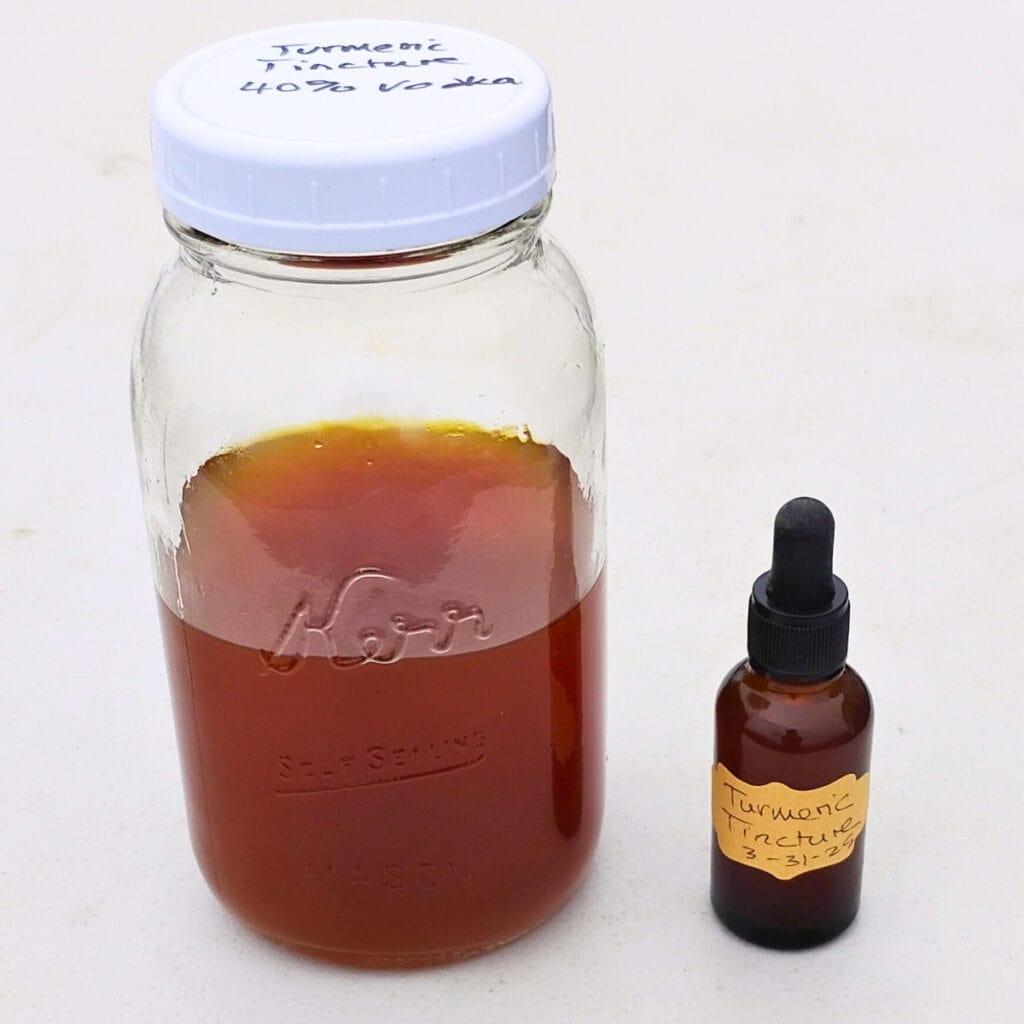
That was so easy! And now you have a potent extract of the turmeric rhizome that is convenient to use every day and easy to take with you when travelling. Try to take it with meals that include some fats for best absorbency. And if you grow your own, you’ll have the freshest turmeric for making extracts!
Let me know if you make this turmeric tincture, and what is your favorite way to use turmeric? Have you grown your own? I’d love to hear all about it in the comments. And please ask if you have any questions about growing or using turmeric and making a turmeric tincture.
To get more recipes like this and other information on homesteading and traditional skills, sign up for my Food For Life Garden News, and I’ll let you know when I post new information.
More Content Like This
Fermented Turmeric Paste – Make this convenient fresh turmeric paste for your wellness and as a convenient seasoning for your curries and other foods. Turmeric has so many benefits, find out all about it and why fermenting it makes it even better.
Lemon Balm Tincture – Make a delightful tincture from fresh lemon balm. Learn about the benefits, uses and how to grow it too! This is an essential tincture to stock in your apothecary!
Purple Dead Nettle Tincture – Capture the many health benefits of foraged purple dead nettles in a tincture for year round use.
Fire Cider Recipe – Get your fire cider recipe and make this tonic to be ready for cold and flu season!
25 Essential Herbs To Plant – Start your home apothecary garden with these 25 powerful allies for your health. Learn their benefits, how to grow them and where to source them.
Make A Lemon Balm Salve – Benefits of lemon balm and how to make a salve for cold sores, bug repellant, bug bite relief and more.
Black Walnut Tincture – Black walnut has been used as a deworming tincture for a long time. Make your own with my recipe. I like to use it as part of my goat deworming routine with great results so far.
Probiotic Ginger Paste – A convenient way to have ginger on hand when you need some, either as seasoning in cooking or baking, or to use this powerful ally in your daily health routine.
Fermented Garlic – Lacto-fermented garlic paste is kind of a special food. It’s the ultimate convenience food and health supplement. But besides that, it gets better as it ages. Just like a fine wine.
Fermented Garlic and Honey – A powerful combination of two all-star infection and sickness fighters. Make this easy remedy today and be ready for cold and flu season!
Fermented Ginger Honey – Keep this potent fermented health food on hand. Use the powers of Ginger and Honey in a tasty syrup form that you’ll love.
Pin This Recipe For Later
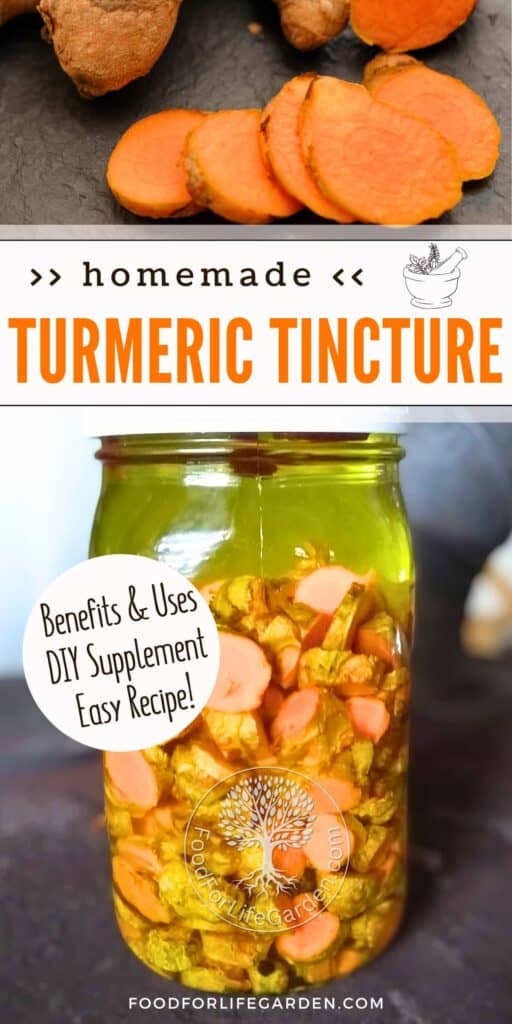
Shop This Post
Powdered turmeric
Flour sack towels
Organic flour sack towels
Nut milk bag
Dropper bottles
Azure Standard (sells organic fresh produce and delivers by truck at a local drop)
Nitrile gloves
Butter muslin type cheesecloth
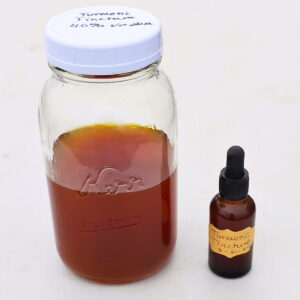
Turmeric Tincture Recipe
Equipment
- 1 quart jar with a tight fitting lid
- 1 nut milk bag, paint strainer bag, flour sack towel or butter muslin
- 1 dropper bottle for dispensing
Ingredients
- 8 ounces turmeric rhizome
- 1 Tbsp black peppercorn
- 1 quart 100 proof Vodka – 80 proof will do if you can't get 100 proof.
Instructions
- No need to peel the turmeric, just give it a good rinse and cut out any blemishes.
- Grate, finely slice, or chop your turmeric root and fill your quart jar to about ¾ full. Use gloves if you have some, or your hands will stain (and everything else too).
- Add the peppercorns.
- Pour the vodka over the herbs and fill the jar to the top. It is important to coverall herbs and as they will expand a little once wet, we'll want to be generous. I like to fill mine right up to the very top. Check back later to make sure they are still covered.
- Close the lid tightly, label it, and shake it.
- Set aside for 6-8 weeks to extract the benefits of the turmeric. Give it a shake every few days, whenever you think about it.
- Strain out the herbs using a piece of cloth. Squeeze out what you can and dispose of the rest in your compost. You can also add it to pig feed, if you don’t add too much at a time (you don’t want to get them drunk). Turmeric is good for them too.
- Now store it in a tightly sealed container. It will keep for many years.
- If you like, you can fill a dropper bottle with your tincture for immediate use. But store the rest in a well sealed jar, not in dropper bottles.

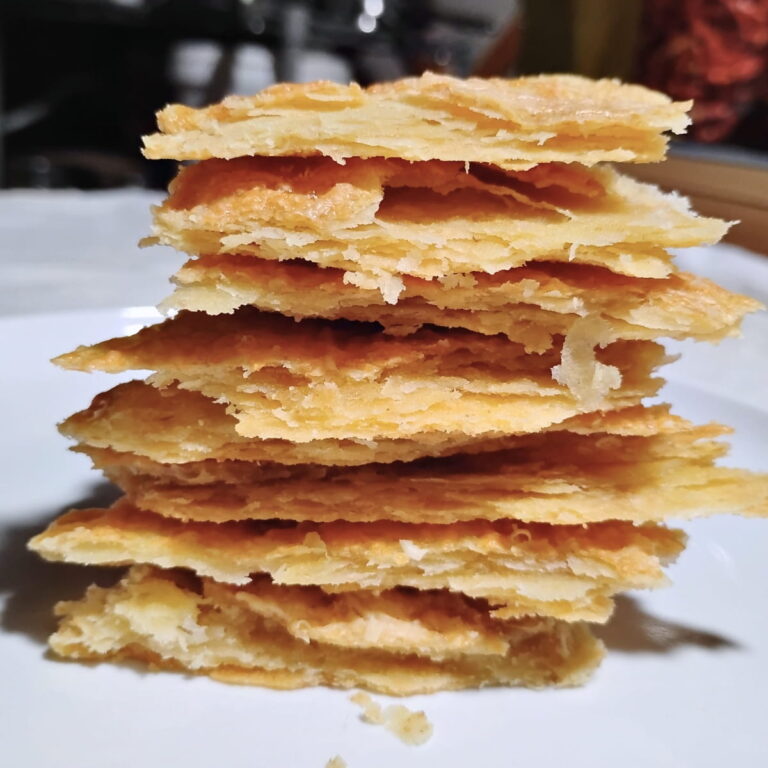
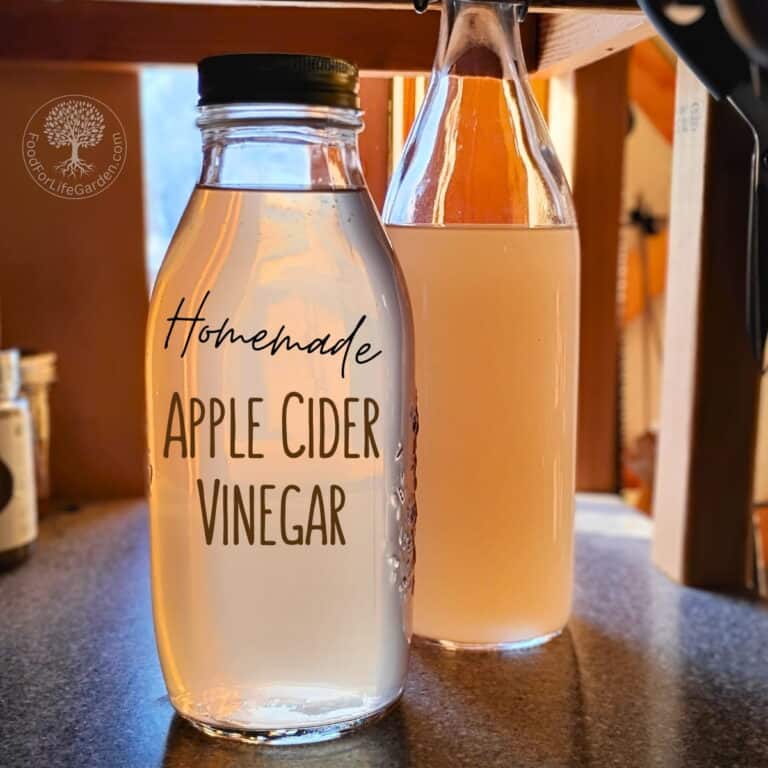



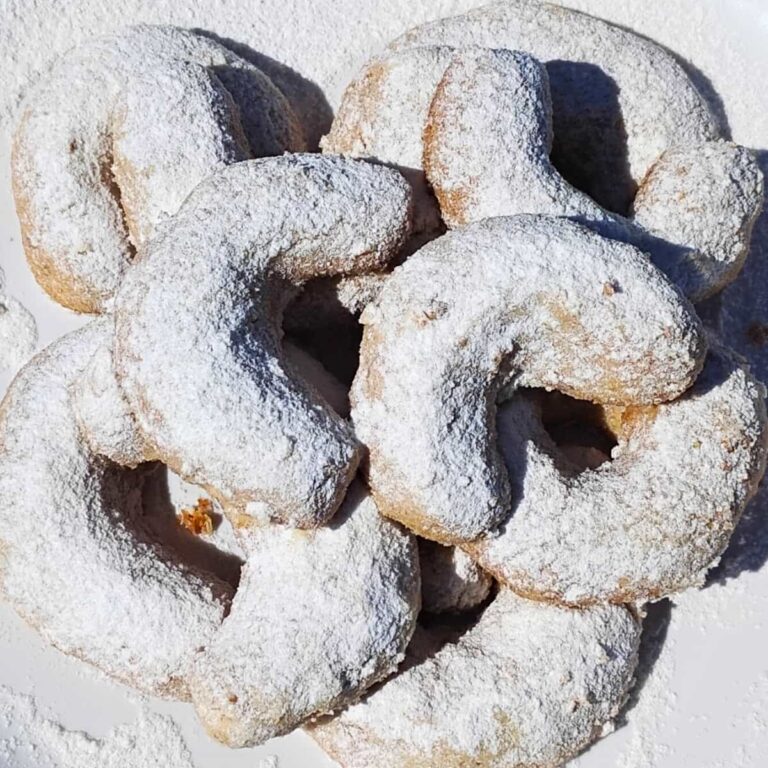
Making your own turmeric supplement can save you a lot of money, especially if you need to take it regularly. This recipe is so easy to make and you’ll have an effective turmeric supplement that’s easy to take along for when you need it. Please ask any questions you have here in the comments. I check regularly and will get back to you as soon as I can.
I love making tinctures! I haven’t made a turmeric one yet. I am going to have to try this. Thank you for the great information.
You’re very welcome and I hope you get to try it!
Great information. I wish I had done this over the winter. We got slammed with sickness after sickness! Will have to give it a try! 🙂
Oh shoot. I hope you’re all recovered and well! Maybe this can help next time with a bit of immune support!
Love this! What a great idea!
👍 Thanks so much for your comment!
This is so thorough and informative. Thank you!
Wow! Sounds like I need to be taking some tumeric, and this tincture seems like such a great way to get it in.
It is! I love how the tincture is so convenient to use.
Wow you seem so knowledgeable and all your posts are always packed with information! Love it thanks 😊
I need to try this once I can find time!!
That is always the challenge! Hey Ophelie, I appreciate your visit!
Thank you so much for saying that, Nicole! I appreciate your feedback!
Thank you so much for this recipe! I have lots of fresh turmeric at home, because I use it in cooking and vegetable juices sometimes. But I definitely want to try this tincture now!
Thanks so much for your comment, Halina! I hope you get to try it!
Wow, this is super informative! I definitely want to try this– so easy and inexpensive. We keep turmeric supplements on hand for all sorts of uses you describe, but I hadn’t really considered that isolating the curcumin may not always be the best option. It definitely makes sense to me to use the whole thing. After all, it was made like that for a reason!
Would you know if adding fresh ginger to this tincture recipe would be a good addition? And if so, how much would you add?
Hey Sandy! Thank you for your question! The quick answer is yes, you can most certainly add ginger, and the amount would be up to you. If I did that I’d probably go half and half. But my preference is to prepare tinctures with just a single herb and then mix the finished tinctures later for different applications. Reason for this is that you might want to use just ginger one day for a certain condition, or just turmeric, or maybe you have someone who can’t tolerate one or the other and it would be harder to customize your remedy recipes. So my advice would be to make a ginger tincture separately (the same way as the turmeric tincture) and make the turmeric tincture separately too. Then after straining them, you can make a custom mix of the two in your dropper bottle to take as needed.